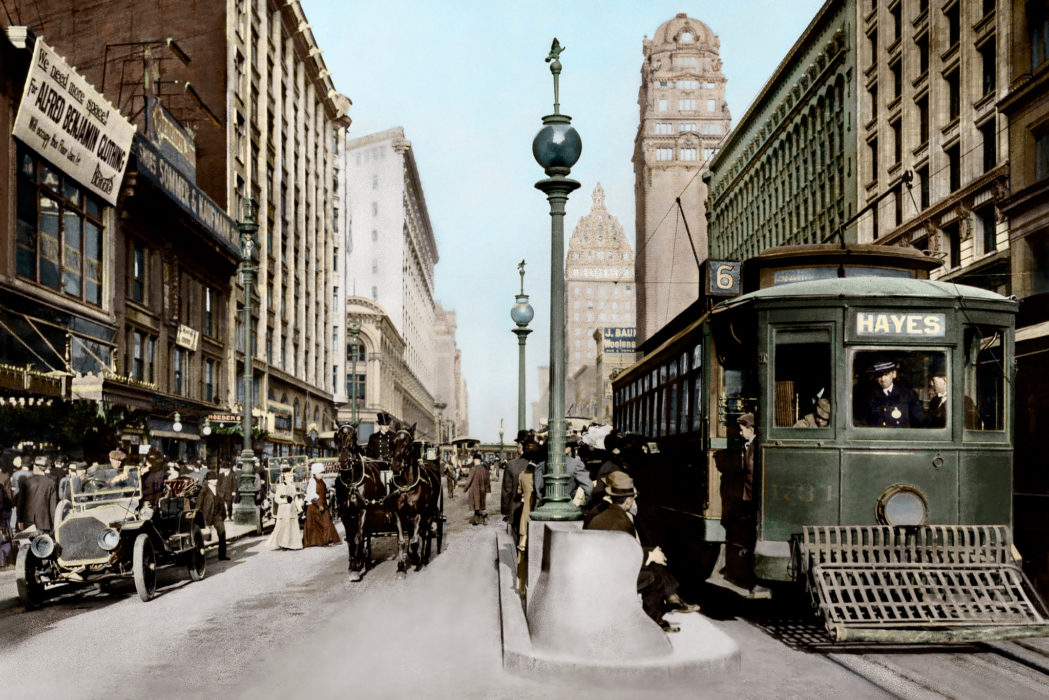“WE FORESEE THAT THE daily papers are about to give this city a fearful dose of ‘fashionable religion,’” warned an editorial in the San Francisco Monitor on October 5, 1912, referring to ‘Abdu’l-Bahá’s arrival in the city. It described ‘Abdu’l-Bahá as “the leader of the latest in fads,” and warned that the local press would soon be flooded with coverage. “Be prepared for the deluge!” the writer declared.
At least he was right about the deluge. At least thirty-seven separate articles and announcements covered ‘Abdu’l-Bahá’s visit to California. With the exception of the Monitor piece, the press coverage was positive, inquisitive, and reasonably accurate. John D. Barry, a celebrated essayist, fiction writer, and travel journalist, wrote two editorials on ‘Abdu’l-Bahá in the San Francisco Bulletin — on October 12 and 14 — which provided a counterpoint to the piece that appeared in the Monitor.
“The harm in Bahaism and all such so-called ‘religions’ is first of all this:” the Monitor claimed, “They deny the divinity of Jesus Christ. They draw Him down to the level of a mere good man, a kindly philosopher.” In churches throughout the nation, of course, ‘Abdu’l-Bahá had affirmed the divine nature of Jesus. Seven days after the Monitor article, he would argue at length on behalf of Christ in front of two-thousand people at the Temple Emanu-El, San Francisco’s largest Jewish synagogue.

John D. Barry, in crafting his editorials for the Bulletin, took a different approach. First, he took the time to visit ‘Abdu’l-Bahá. Barry arrived at 1815 California Street, ‘Abdu’l-Bahá’s residence in San Francisco, and described a brief but revealing conversation with a woman in the foyer. “It sounded like practical Christianity,” he wrote. “I wondered if indeed the spirit of Christianity had returned to earth, this time by way of Persia.”
Then, as if providing a rebuttal to the Monitor piece, he “speculated on what would happen if it were generally known in San Francisco that the new religion was not merely a philosophical cult, appealing to the fashionable, but a broad, practical religion, reaching out to all mankind with a special tenderness for those in distress.”
Barry posed a question to ‘Abdu’l-Bahá about the new religion: “What message did it have for the disinherited millions?” ‘Abdu’l-Bahá answered: “Society is like the army. There must be degrees. There must be officers and there must be soldiers. Thus far there has not been a just distribution of rewards. The few have had more than their share. The soldiers have been neglected.”
The Monitor’s attack on ‘Abdu’l-Bahá went on to assert that his denial of Christ “is only the beginning of the abominations which are brought into this land by these Oriental cults which are so eagerly taken up by the idle-brained and the lazy-spined.” One wonders what David Starr Jordan, the President of Stanford, would have made of the comment, who, only two days before the article appeared, had invited ‘Abdu’l-Bahá to address the faculty and student body at his university.
The author made clear his narrow Orientalist views. He lumped ‘Abdu’l-Bahá in with what he considered a group of pernicious teachers from the East. He also betrayed the misogyny still ascendent in 1912. “Woe to those women (for Baha and his ilk appeal chiefly to women) who lend an ear to the seductive teachings,” he wrote. Then he did what dozens of other journalists back east had done since 1900, which was to attack the so-called “unbalanced” mental state of Sarah J. Farmer, the innovator who had founded Green Acre. “Living in the atmosphere of that strange and impenetrable cult,” he wrote, “unbalanced her mind, and she is now an inmate of the insane asylum in Waverly, Mass.” In fact, she was in Portsmouth, New Hampshire, imprisoned against her will. If that weren’t enough, he also lashed out at May Wright Sewall, the President of the National Congress of Women, whom he said was “a physical wreck through the practices of Yoga and the study of occultism.”

John Barry would return for a second interview with ‘Abdu’l-Bahá, where he received a detailed account of the history of the Bahá’í religion. Barry pressed ‘Abdu’l-Bahá on his own biography, but the translator commented that ‘Abdu’l-Bahá wasn’t particularly interested in talking about himself. “Perhaps, too, it would have been a painful history to discuss,” Barry wrote. “For, as I knew, it included long years of imprisonment for the sake of the faith.”
As the interview concluded, ‘Abdu’l-Bahá stood up and went downstairs to address those who were waiting. “At once he began to speak of the message of the new faith,” Barry wrote. “It came not to destroy or disrupt,” ‘Abdu’l-Bahá said, “but to create in mankind a universal harmony.”






